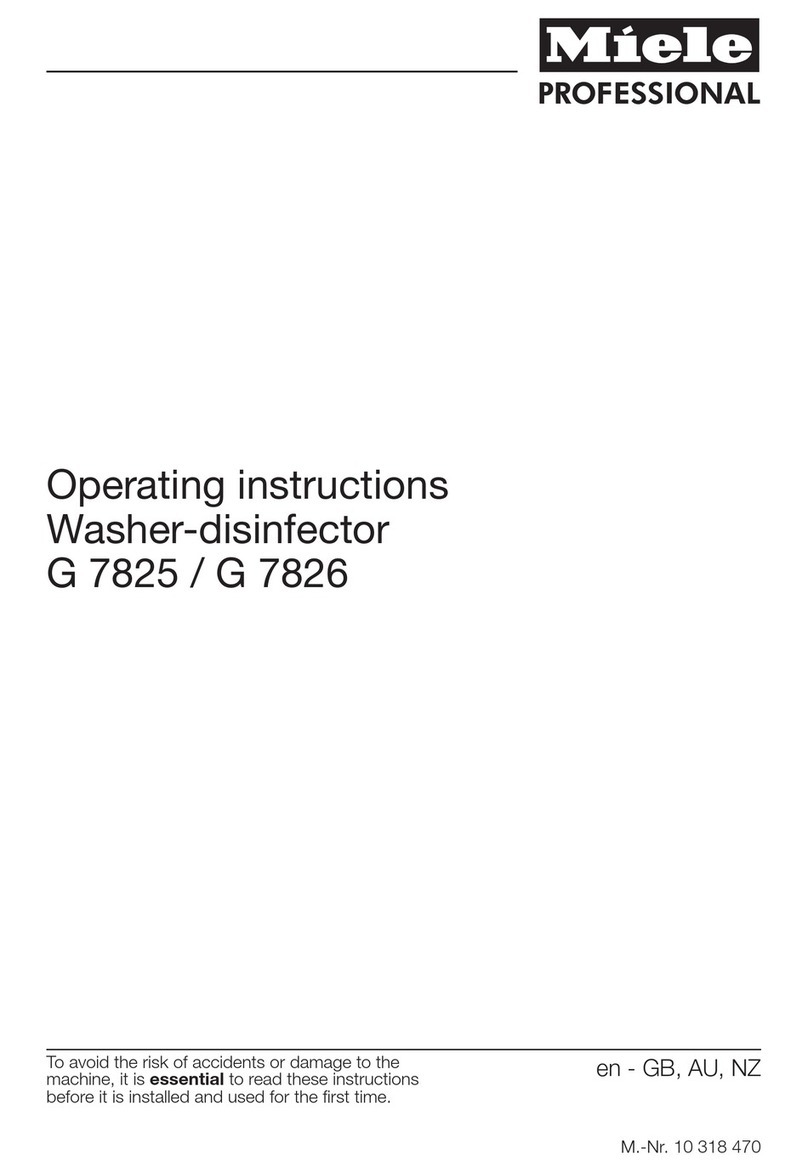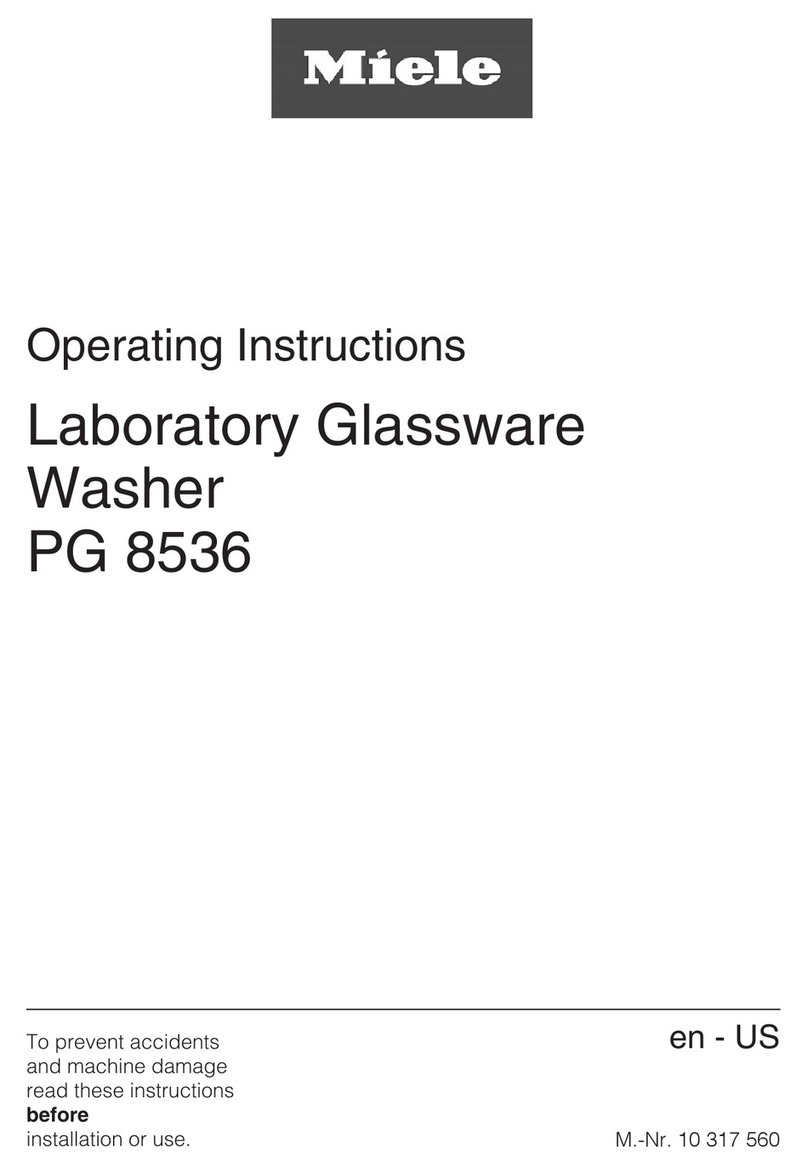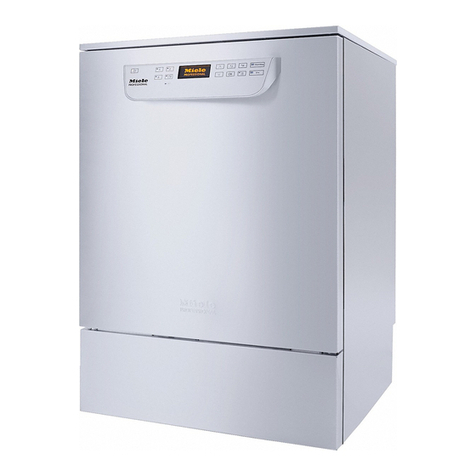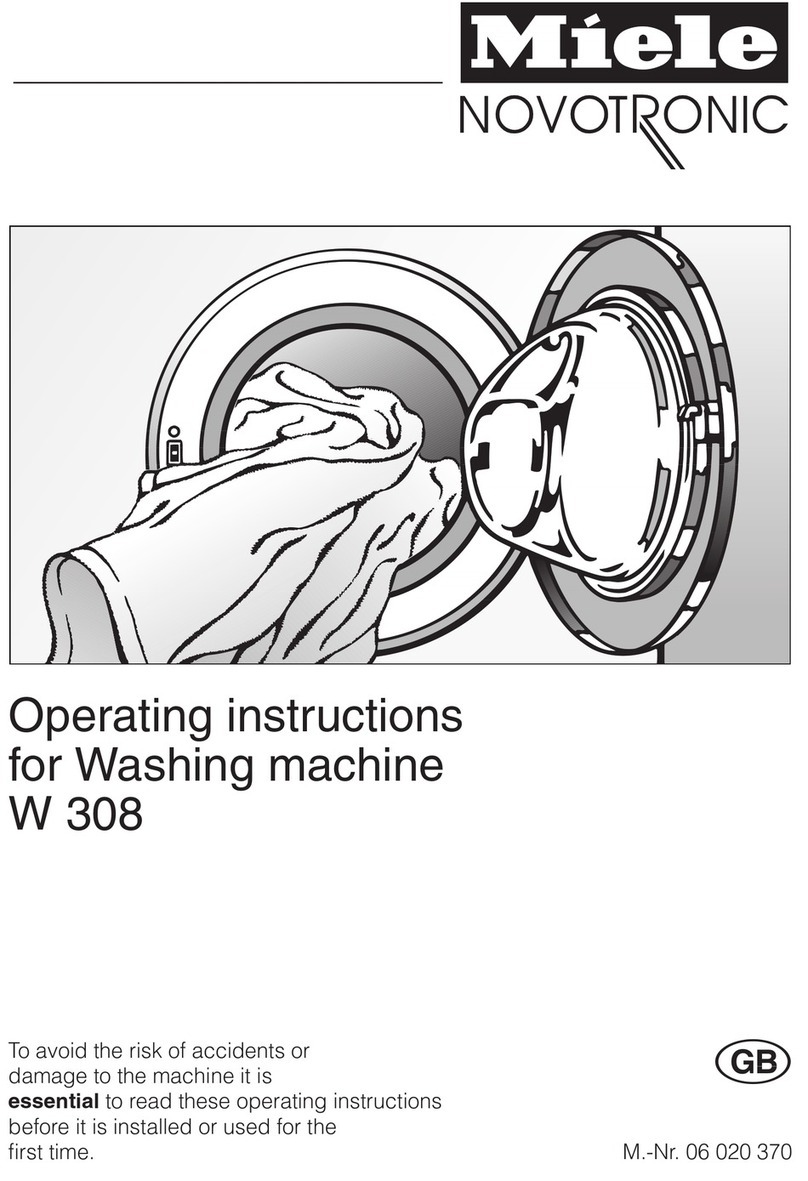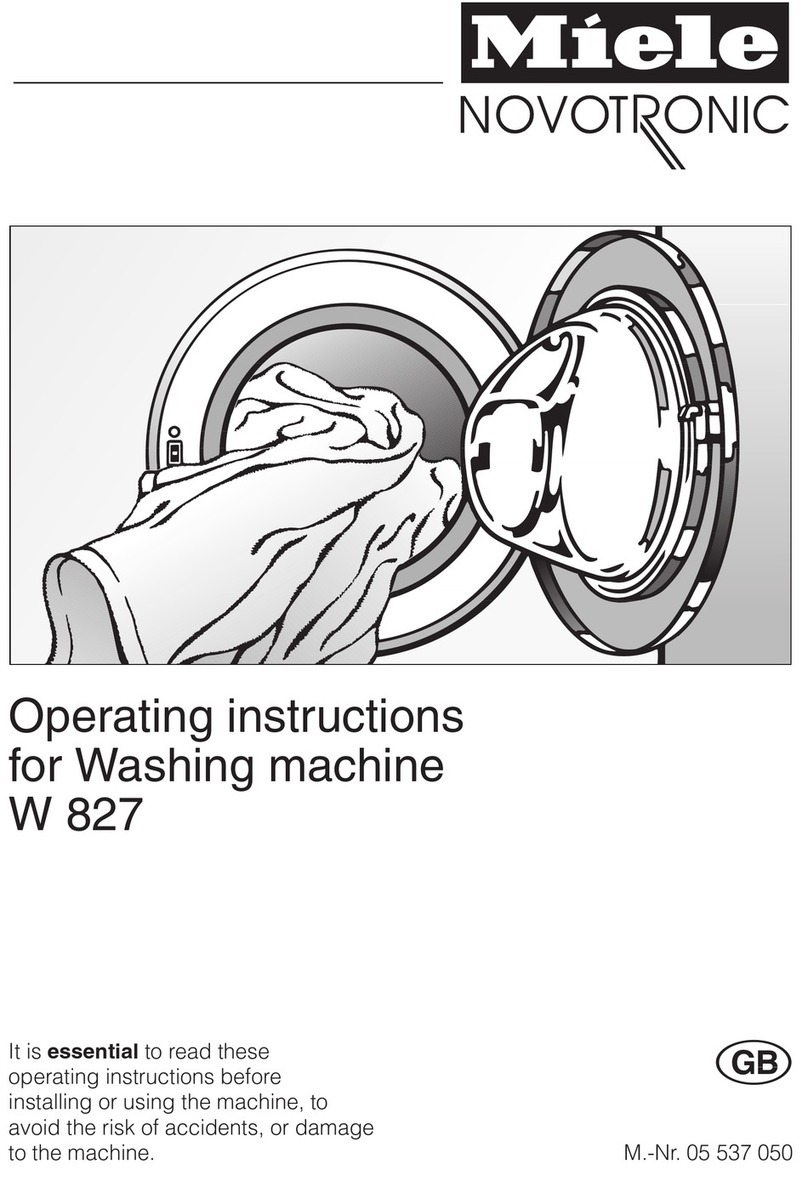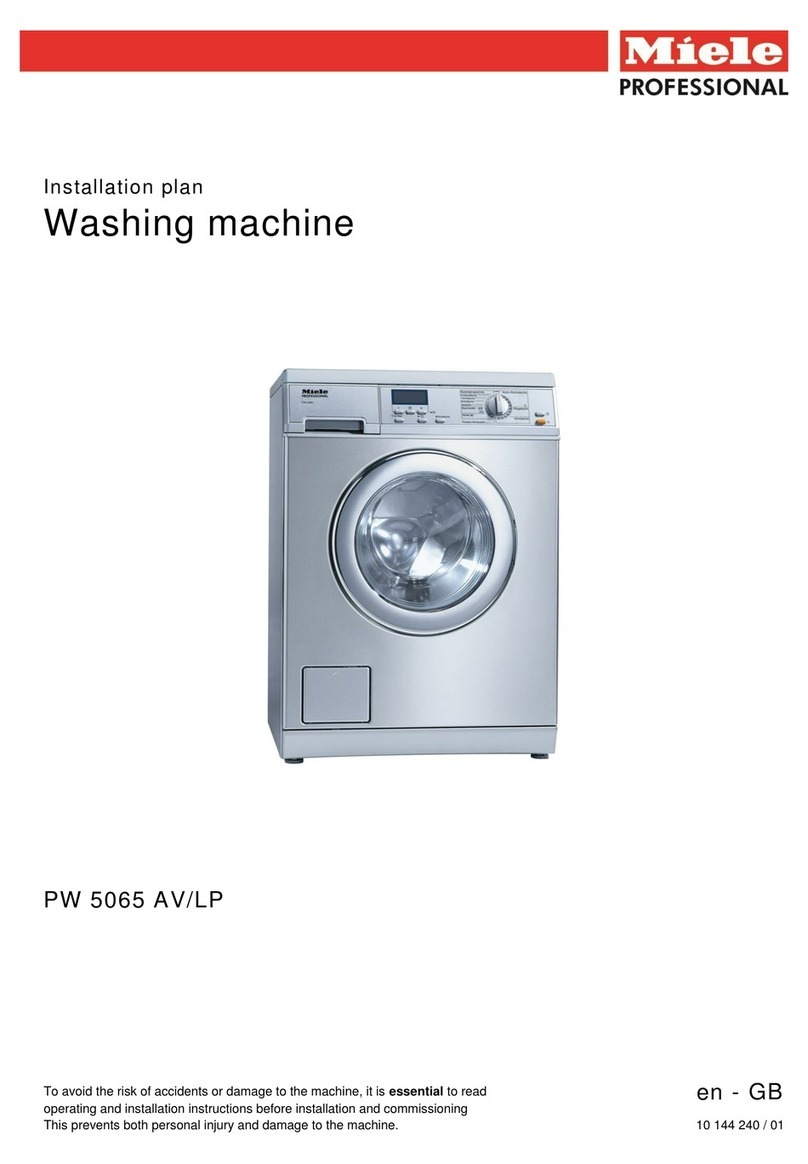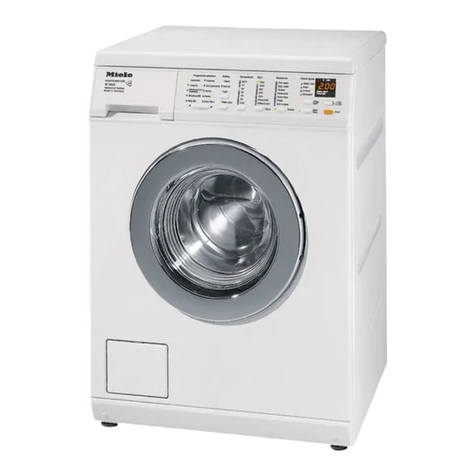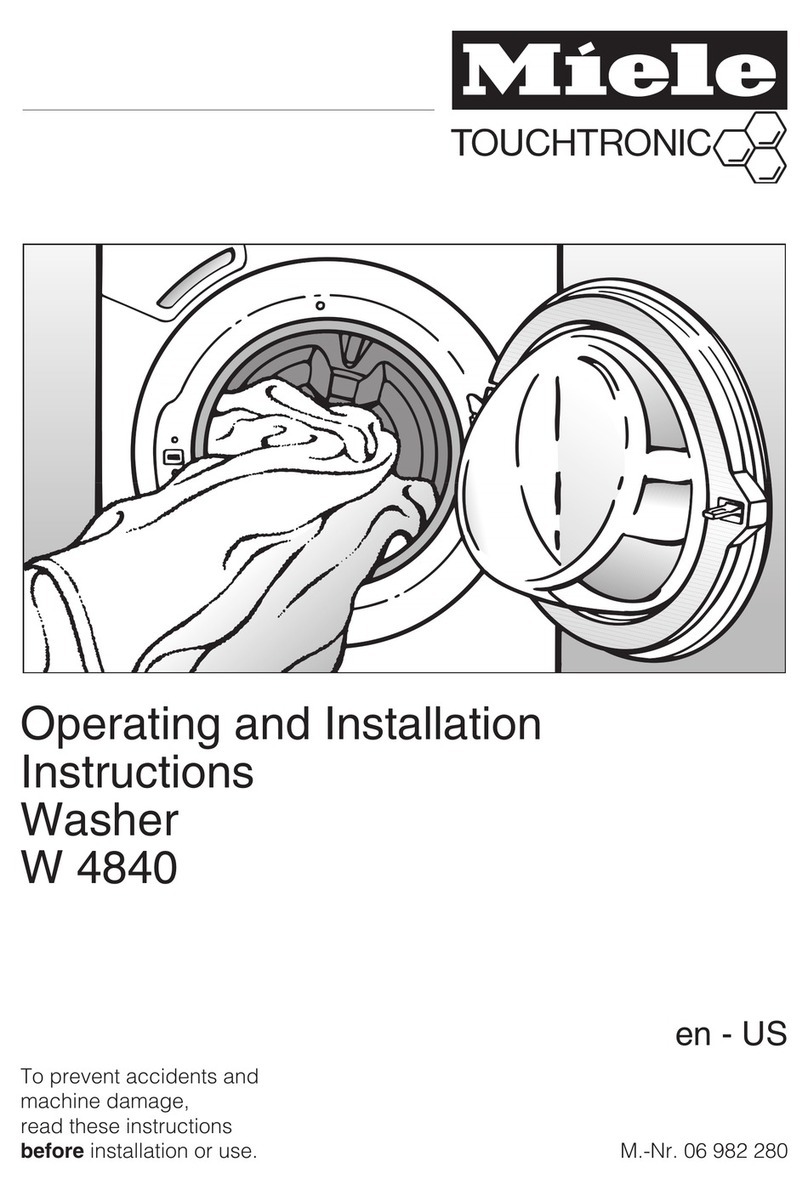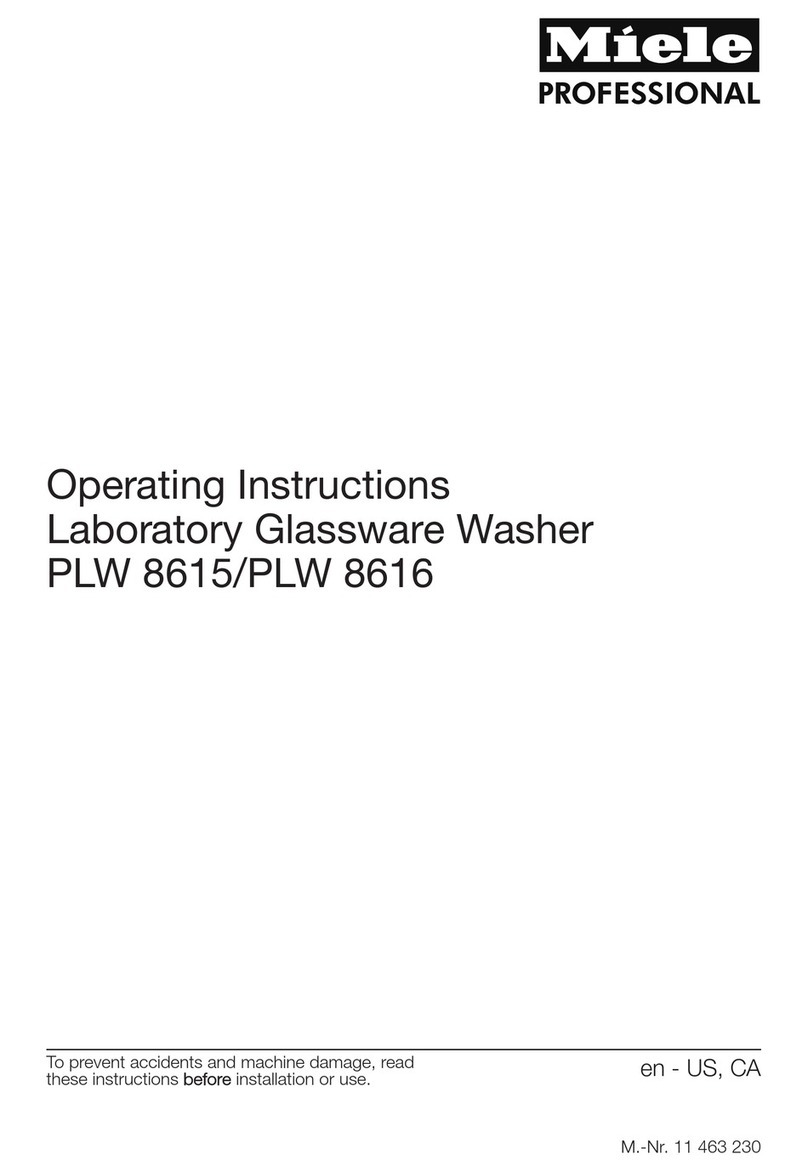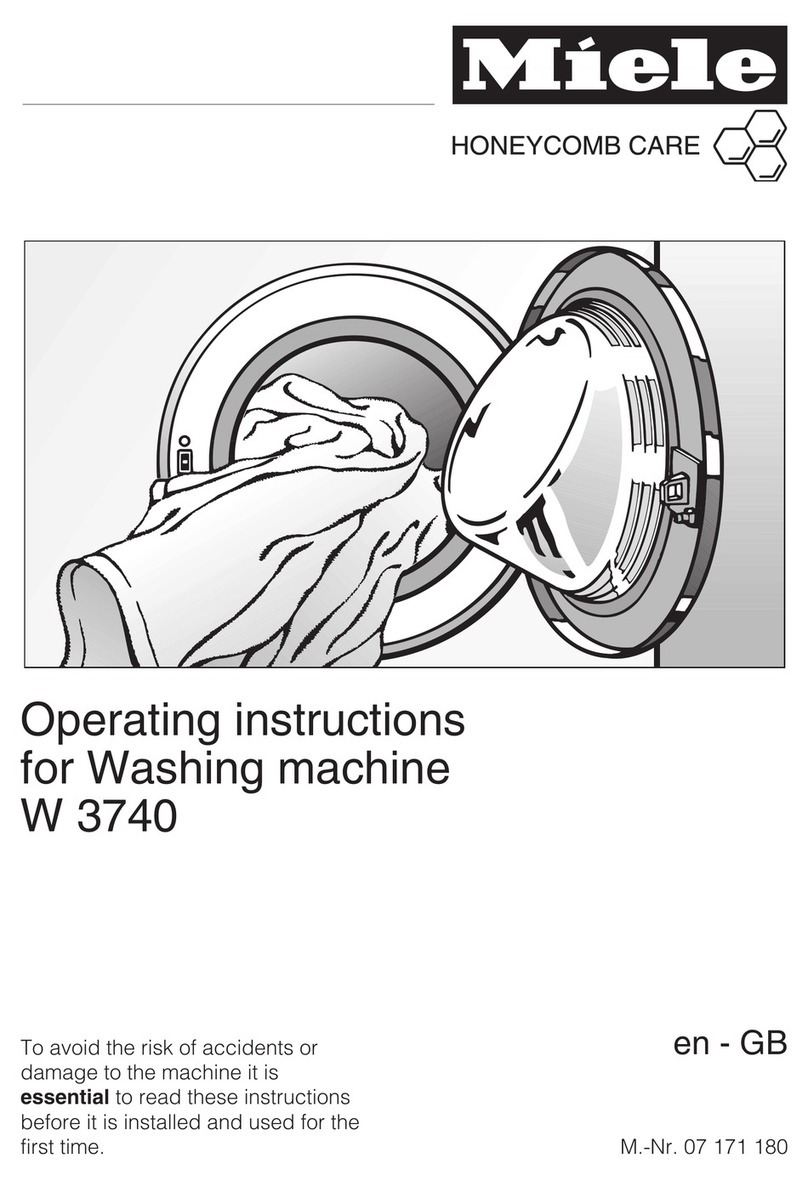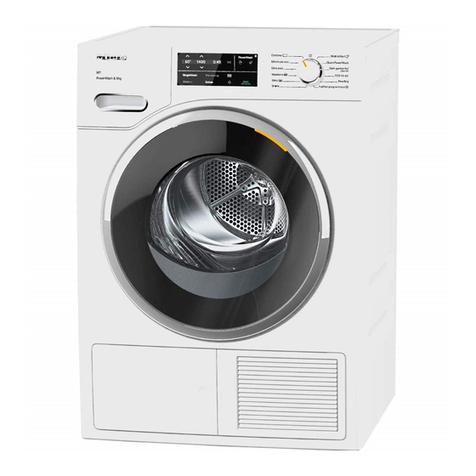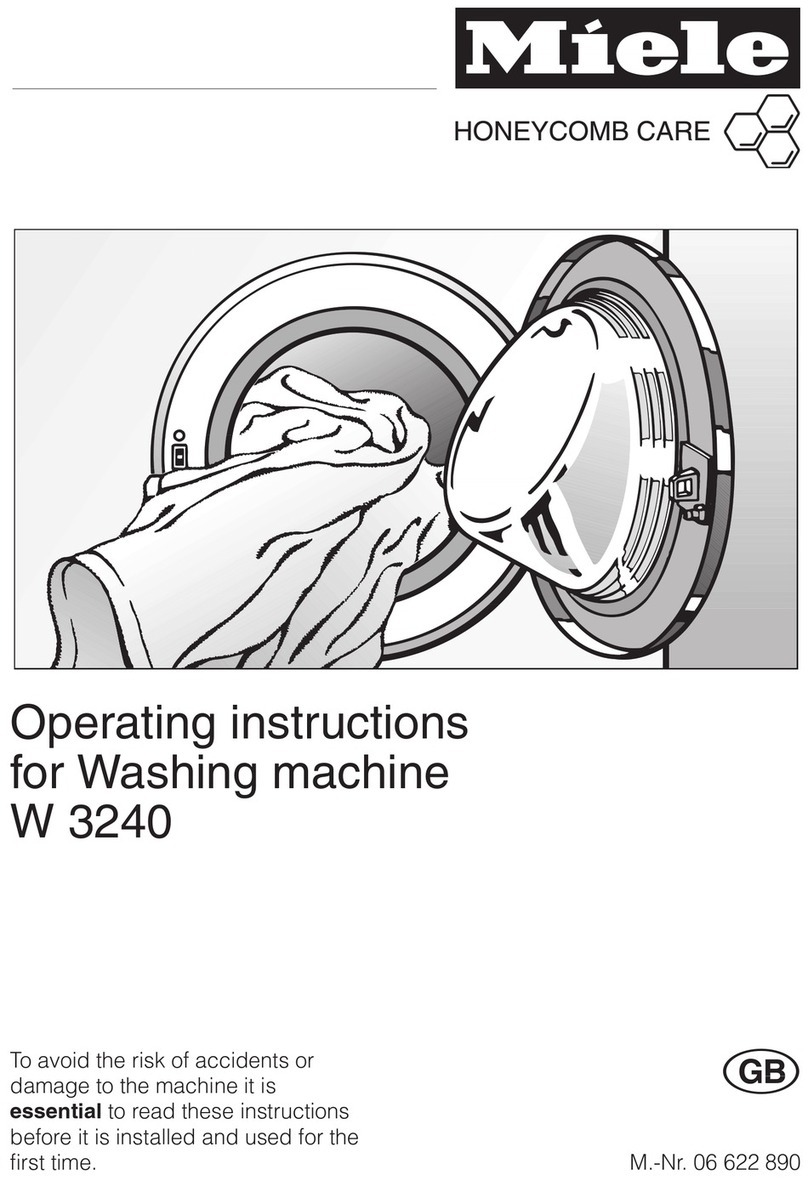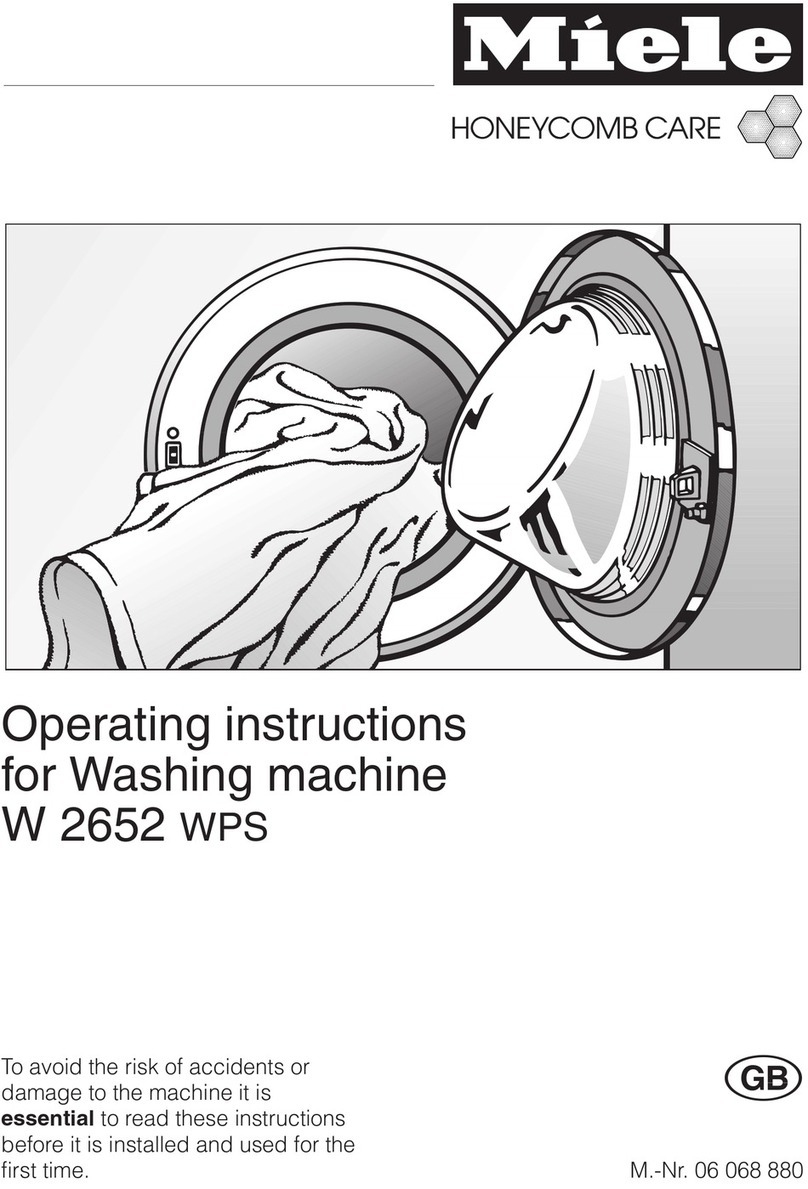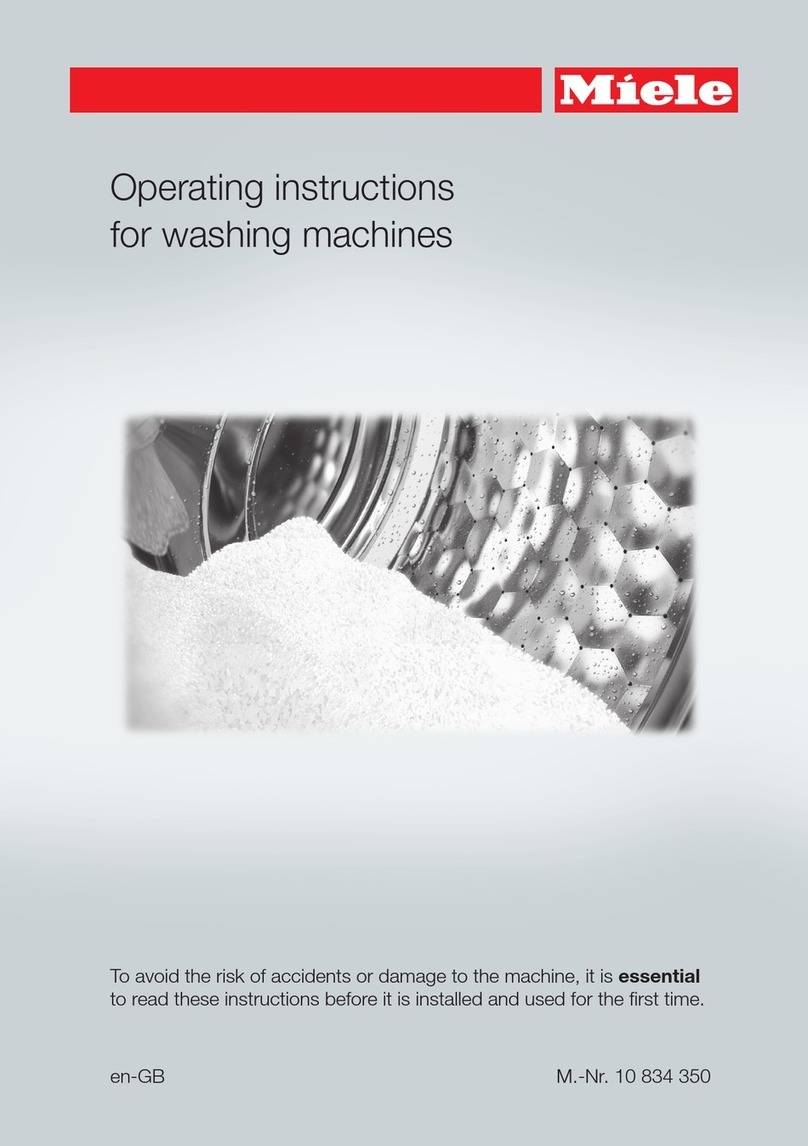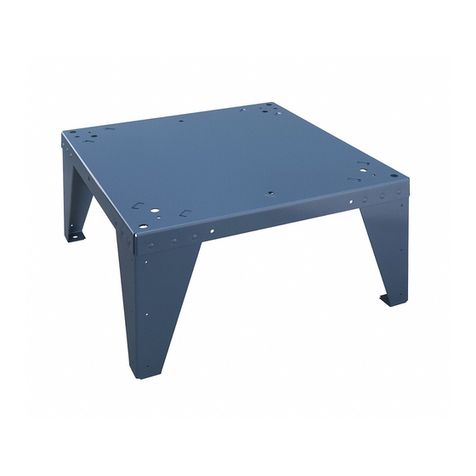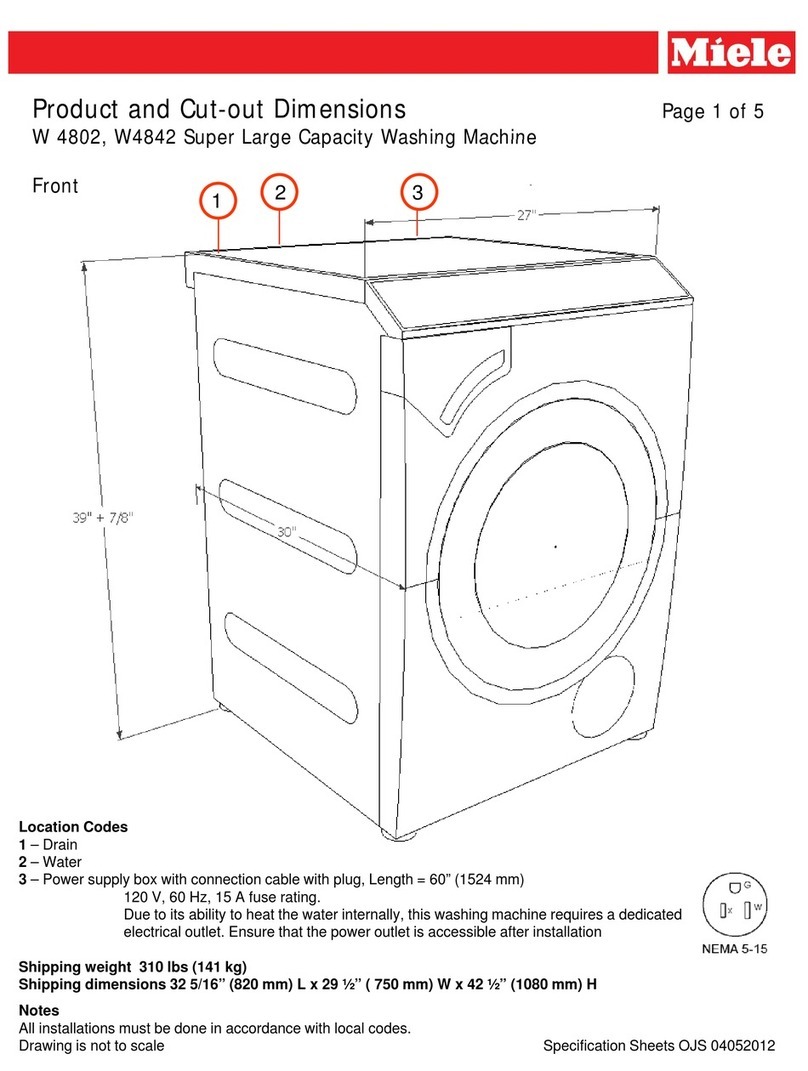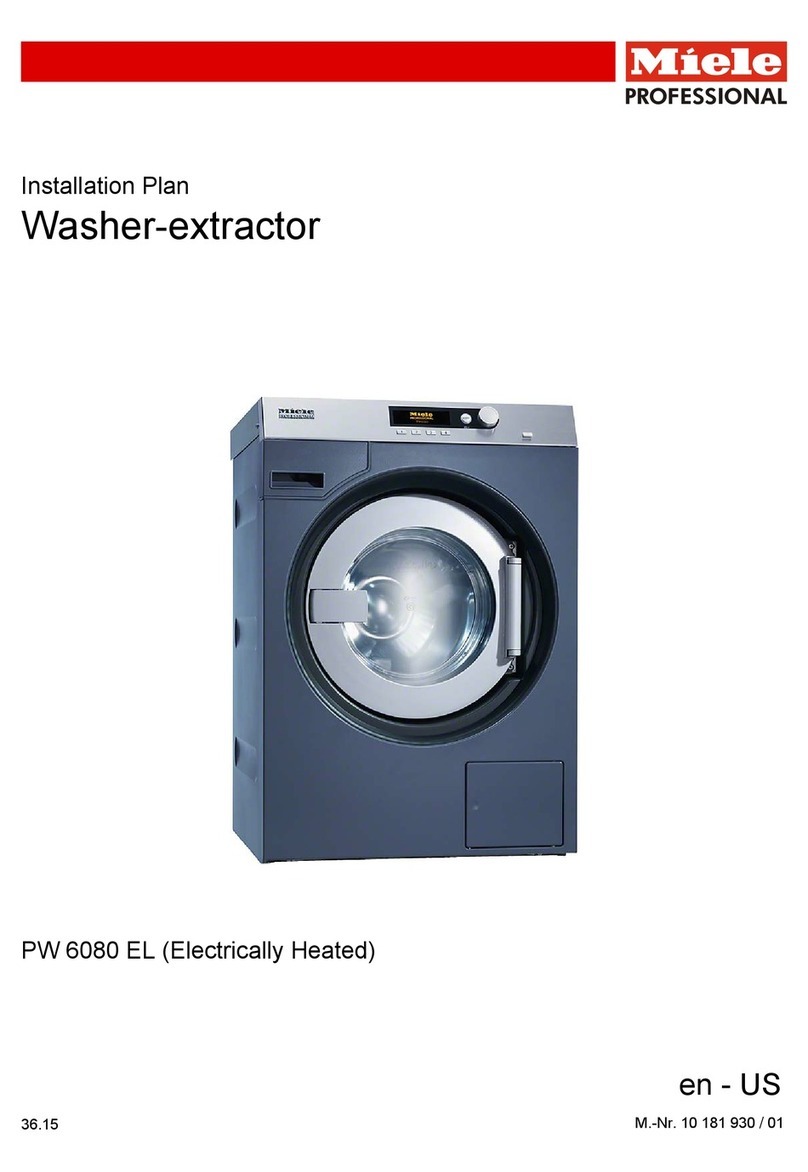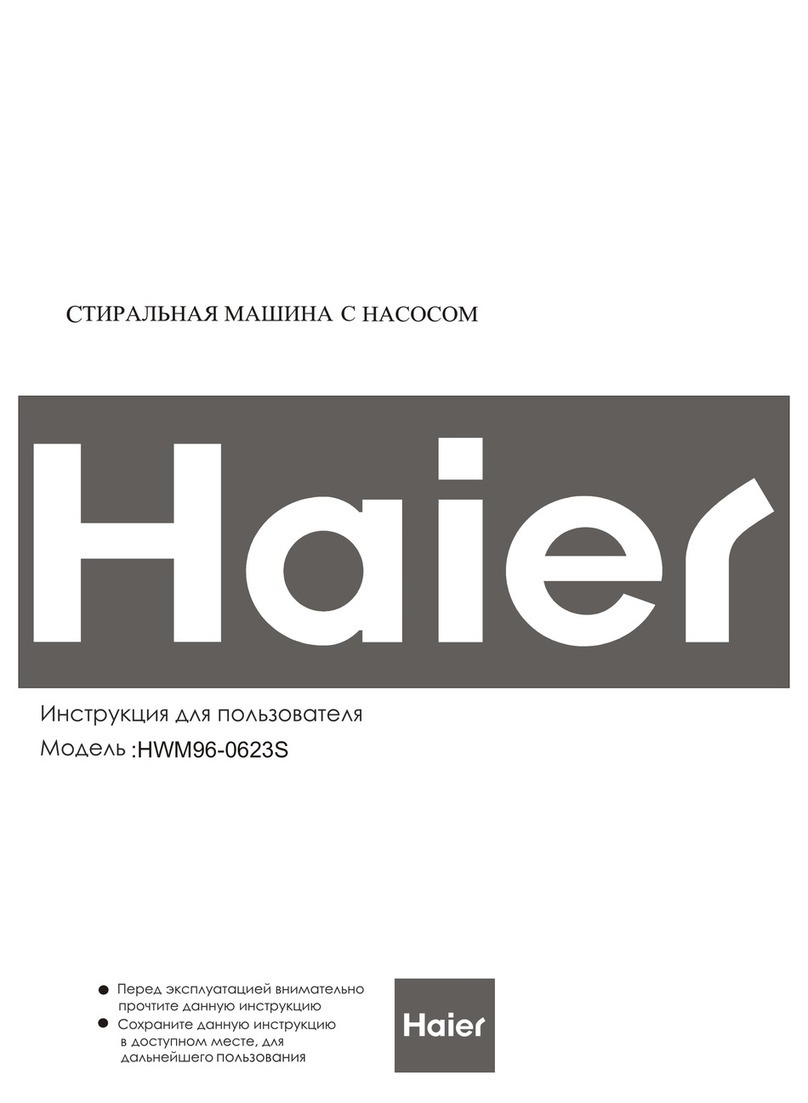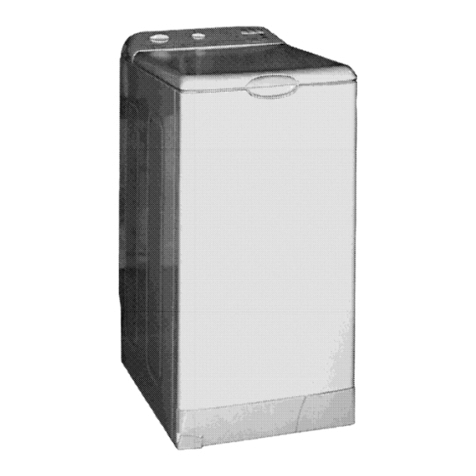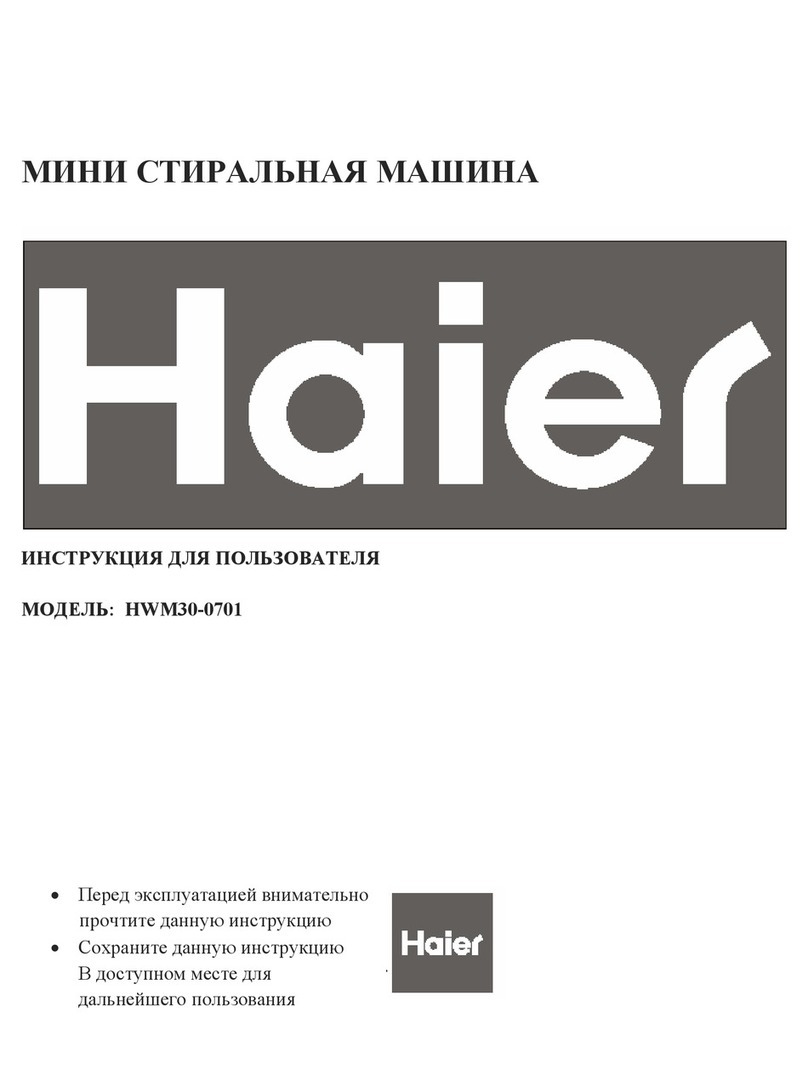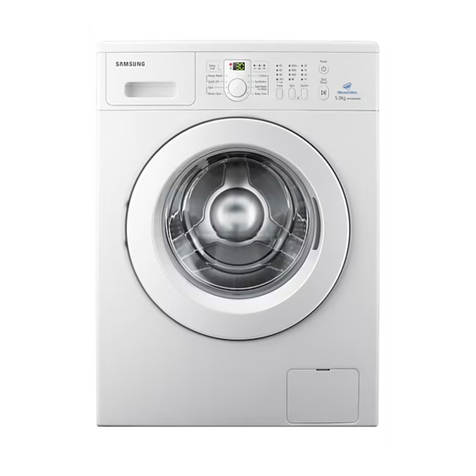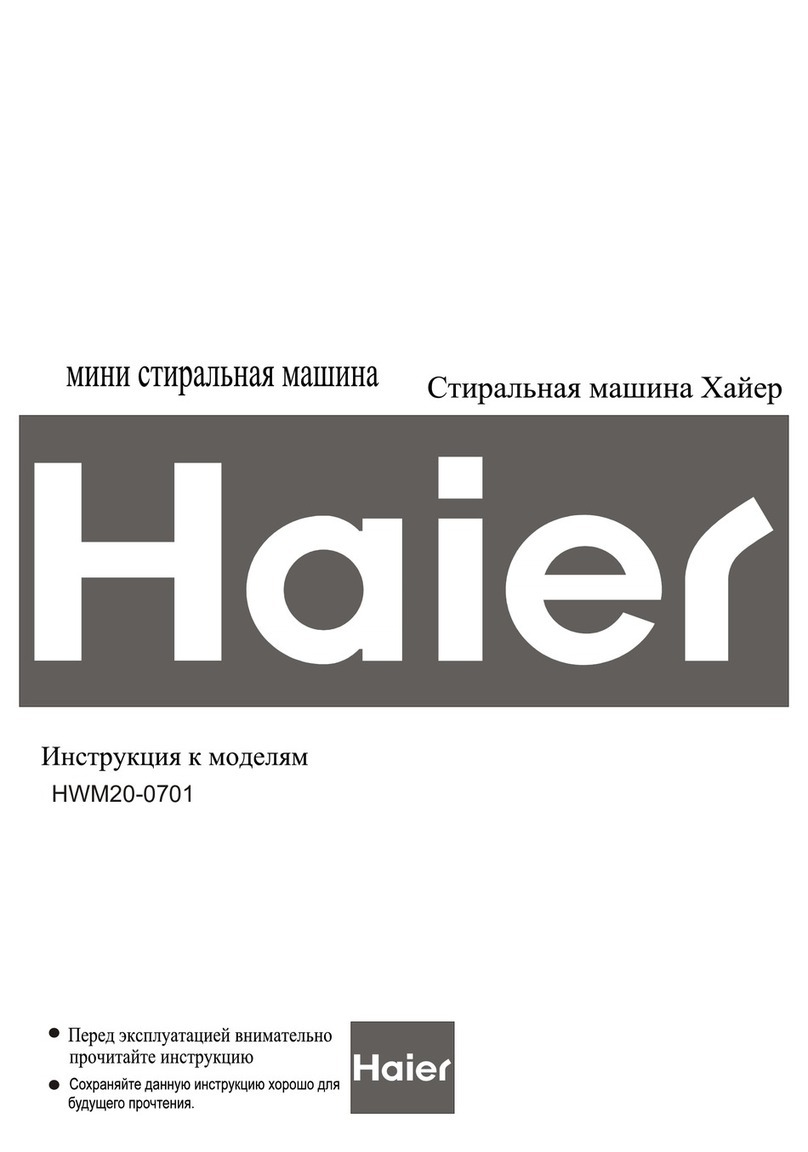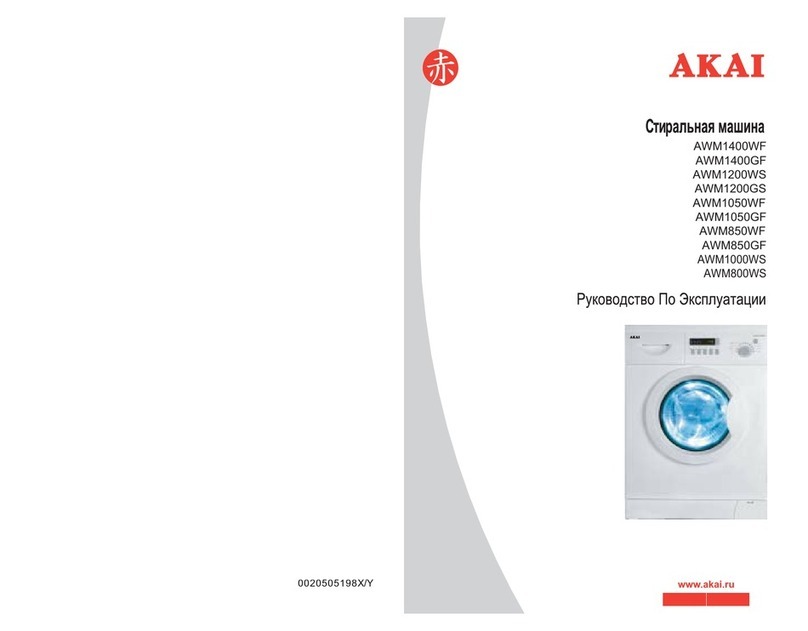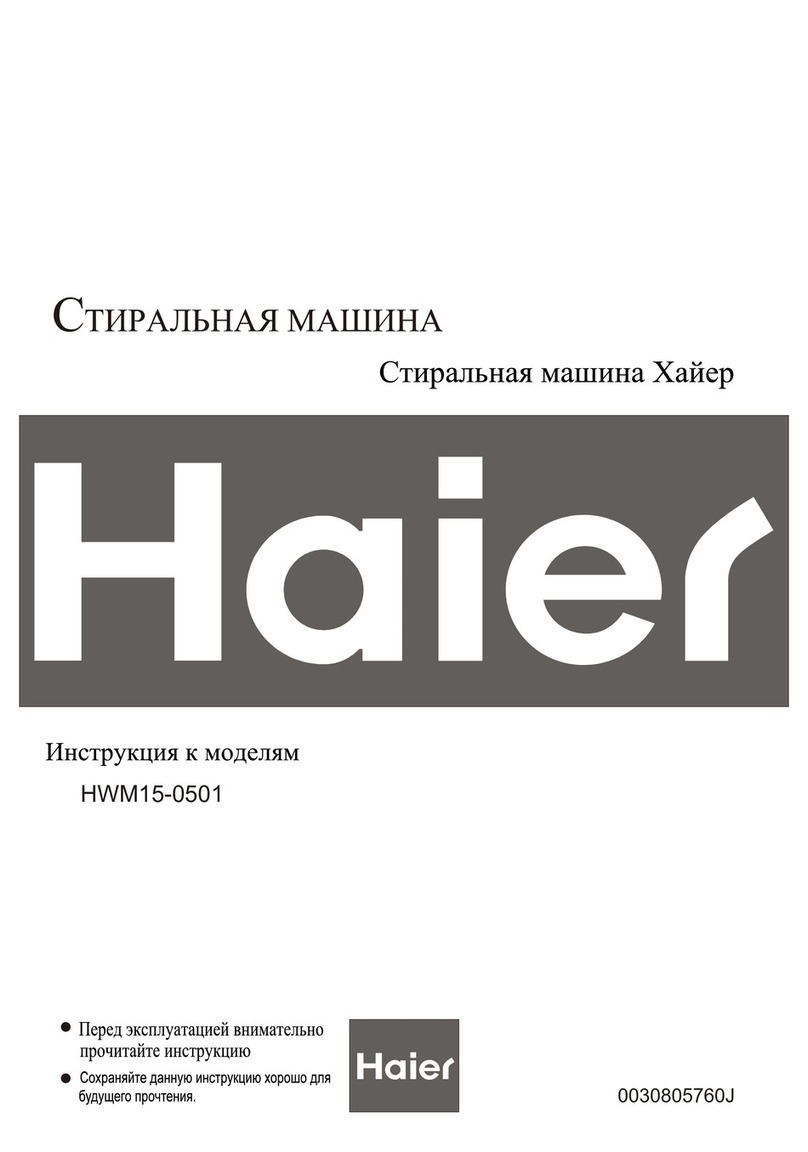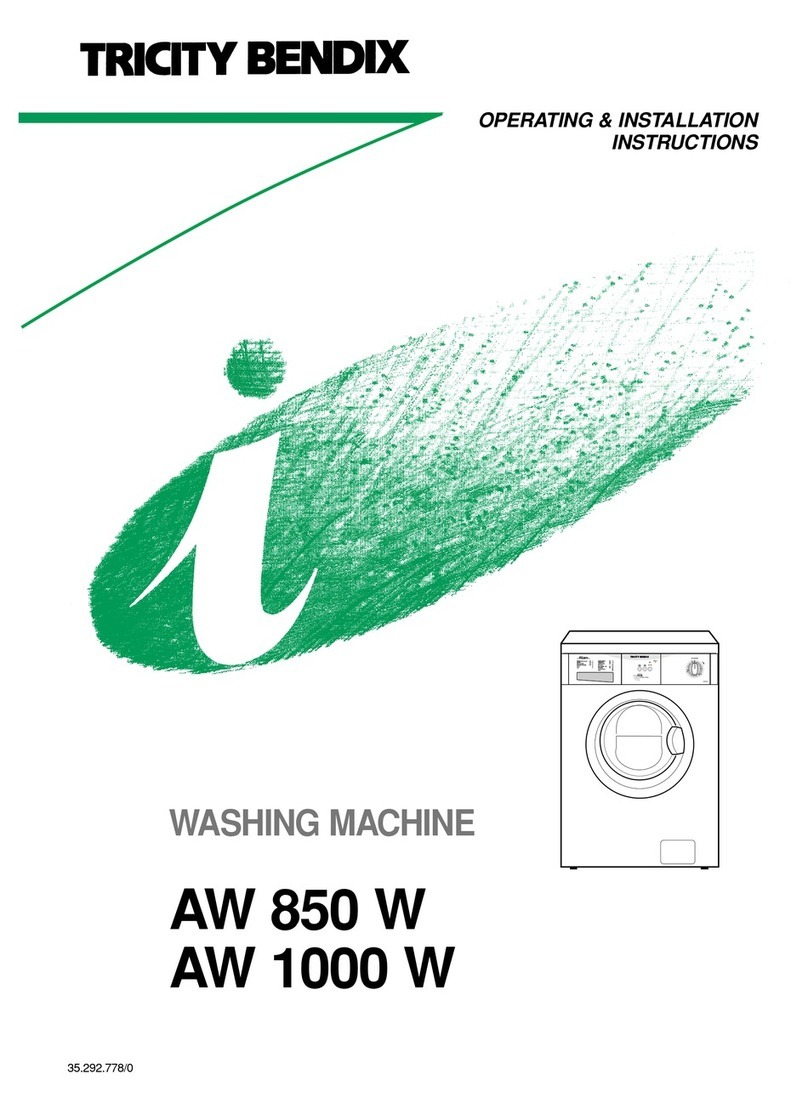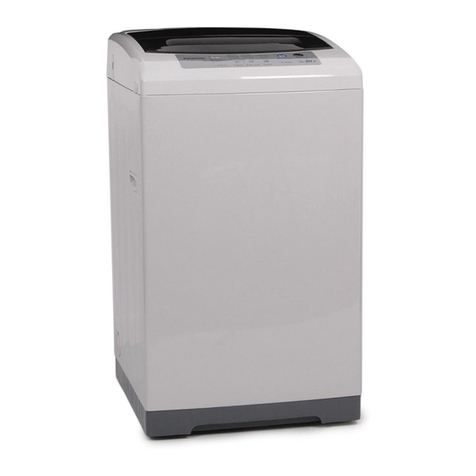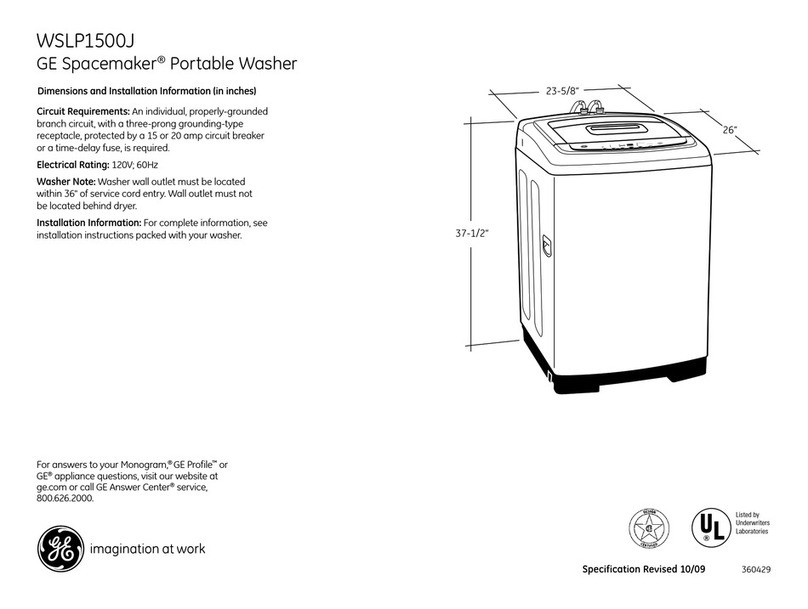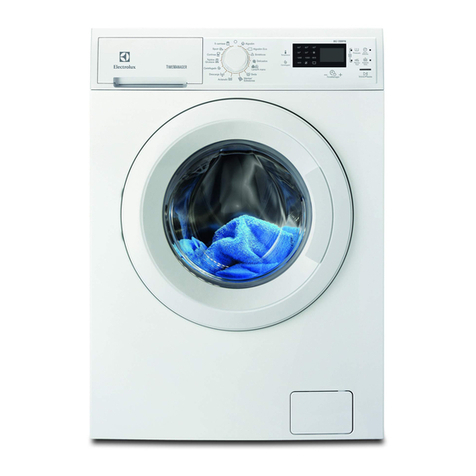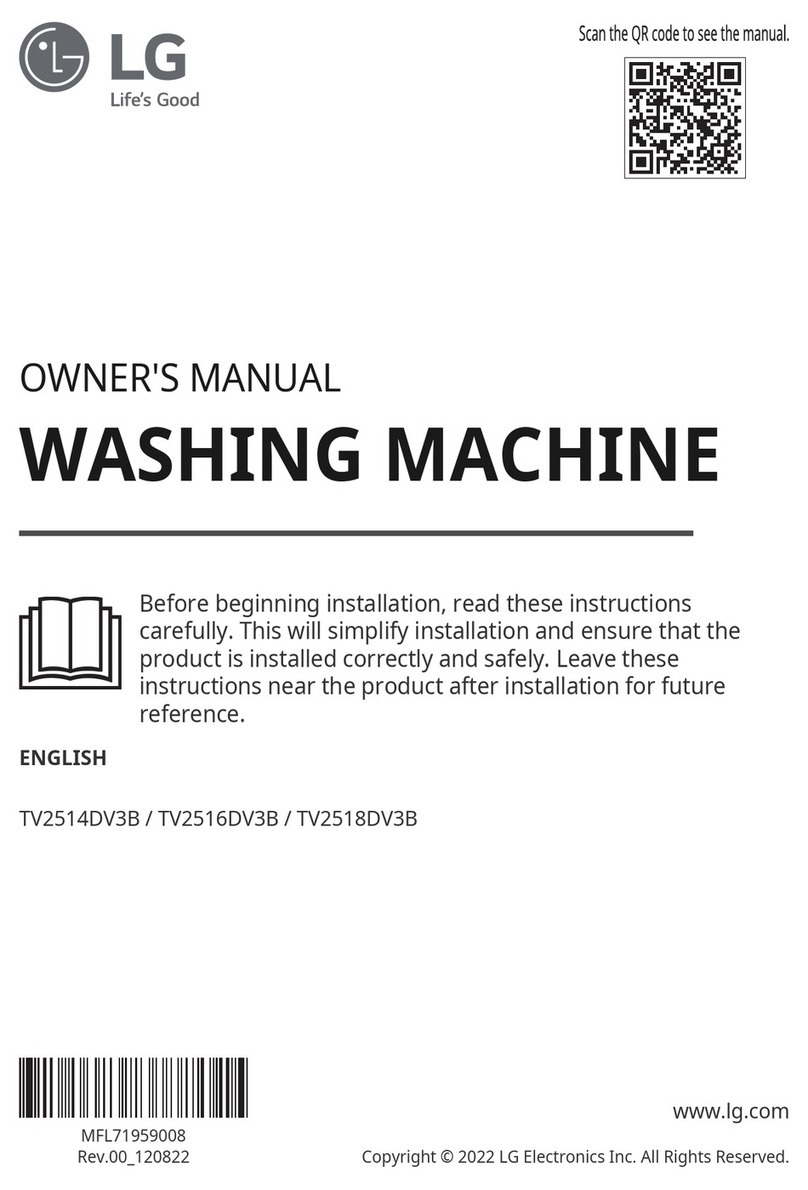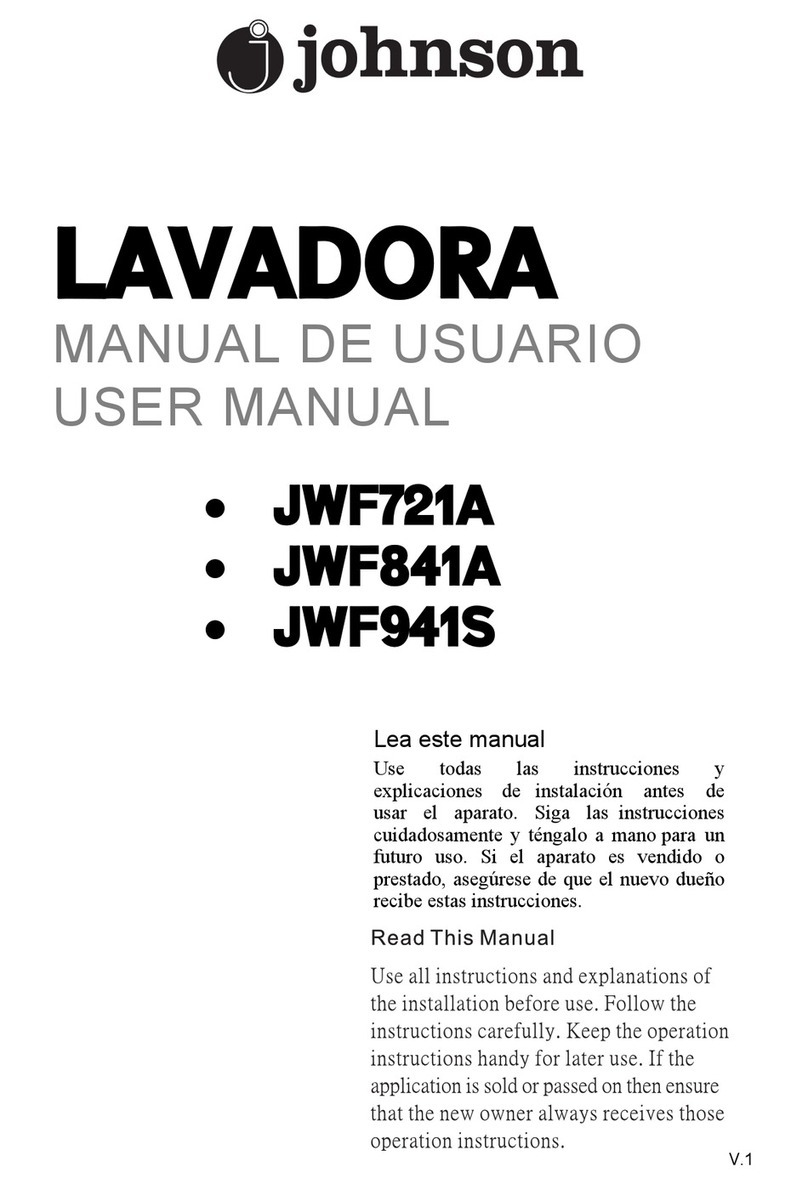This machine complies with all
relevant legal safety requirements.
Incorrect use can, however, lead to
personal injury and damage to
property.
To avoid the risk of accidents and
damage to the machine please read
these instructions carefully before
starting to use it. Keep these
instructions in a safe place for
reference, and pass them on to any
future user.
Correct use
~This washer-disinfector is designed
for specialised applications only, as
described in these operating
instructions. Alterations or conversions
to the machine or using it for purposes
other than those for which it was
designed are not permitted and could
be dangerous. This machine must only
be used for cleaning and disinfecting
laboratory utensils or medical
equipment if the manufacturer has
stated that they are suitable for
machine processing. Follow the
laboratory utensil/medical equipment
manufacturer's instructions. Miele
cannot be held liable for damage
caused by improper or incorrect use of
the machine.
~This machine is intended for inside
use only.
~This machine may only be used in
mobile installations such as ships if a
risk assessment of the installation has
been carried out by a suitably qualified
engineer.
Please pay attention to the following
notes to avoid injury and damage.
~The machine should be
commissioned and then maintained
only by a Miele authorised and trained
service technician. To ensure
compliance with the Medical Devices
Directive concerning good laboratory
practices, a Miele service contract is
recommended. Repairs and other work
by unqualified persons could be
dangerous. The manufacturer cannot
be held liable for unauthorised work.
~Do not install the machine in an area
where there is any danger of explosion
or of freezing conditions.
~The electrical safety of this machine
can only be guaranteed if connected to
a correctly installed earthing system on
site. It is most important that this basic
safety requirement is present and
tested regularly, and where there is any
doubt the on-site electrical system
should be inspected by a qualified
electrician.
The manufacturer cannot be held liable
for damage or injury caused by the lack
of or inadequacy of an effective
earthing system (e.g. electric shock).
~A damaged machine is dangerous.
Switch off at the mains immediately and
call the Miele Customer Contact Centre
or an authorised and trained Miele
Service Dealer.
Warning and Safety instructions
5
